Welcome to a world of joyful learning musical adventures and nursery rhyme activities for preschoolers!
Nursery rhymes have long been cherished as a cornerstone of early childhood education, enchanting young minds with their catchy tunes and whimsical tales.
These delightful verses are more than just playful songs; they are powerful tools that foster language development, cognitive growth, and emotional expression in our little ones.
In this collection of nursery rhyme activities, we will explore creative ways to engage preschoolers in interactive and educational experiences, sparking their imagination and laying the foundation for a lifelong love of learning.
Join us as we dive into a medley of rhythmic fun and exploration!
Rhyme Time Charades:
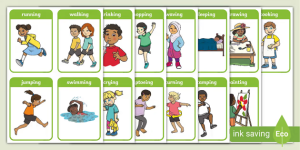
Get ready for a hilarious game of charades that brings your favorite nursery rhymes to life! Start by selecting a few well-known nursery rhymes and writing down key actions or phrases from each rhyme on separate cards. Divide the preschoolers into teams and have them take turns drawing a card and acting out the rhyme without using any words. The rest of the group can guess which nursery rhyme is being depicted. This activity not only encourages creativity and physical movement but also reinforces the memory of the rhymes’ content and helps develop communication skills as the children convey ideas through gestures and expressions.
Rhyme Building Challenges:
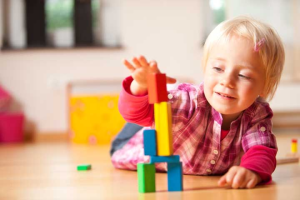
Spark engineering and creativity with building challenges linked to nursery rhymes. Choose rhymes that involve structures, like “London Bridge Is Falling Down.” Provide building materials such as blocks, LEGO bricks, or craft supplies. Challenge the preschoolers to construct bridges, towers, or houses inspired by the rhyme’s theme. This activity promotes spatial reasoning, problem-solving, and fine motor skills.
Rhyme-a-Story Craft:

Combine storytelling and crafting in this imaginative activity. Choose a nursery rhyme and read it aloud to the preschoolers. Afterward, encourage them to retell the rhyme using their own words and ideas. Provide art supplies like crayons, markers, paper, and craft materials. Have the children create illustrations or scenes from the rhyme on paper or craft a simple pop-up book to depict different verses. This hands-on activity nurtures their artistic talents, boosts fine motor skills, and reinforces comprehension as they recreate the rhyme’s narrative visually.
Related: 25 Intriguing Show and Tell Letter I
Rhyme Hunt Adventure:
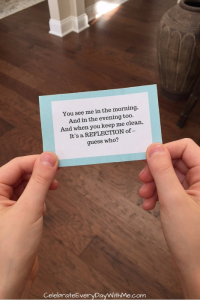
Take the children on an exciting scavenger hunt where they search for clues related to various nursery rhymes. Create rhyming riddles or puzzles that lead the preschoolers from one location to another. At each spot, they discover a small object or image representing a specific rhyme. Once all the clues are collected, gather the children for a group recitation of the rhymes and discuss the objects they found. This activity sharpens critical thinking skills, builds vocabulary, and encourages teamwork and cooperation.
Rhyme & Rhythm Dance Party:

Put on your dancing shoes and groove to the rhythm of nursery rhymes! Compile a playlist of catchy nursery rhyme tunes with different tempos. Gather the preschoolers in an open space and guide them through dance routines that match the mood of each rhyme. For instance, the children can skip and jump for energetic rhymes like “Humpty Dumpty,” and sway gently for lullabies like “Rock-a-bye Baby.” This lively activity enhances coordination, rhythm awareness, and physical fitness while fostering a joyful connection to the rhymes.
Rhyme Puppet Theater:
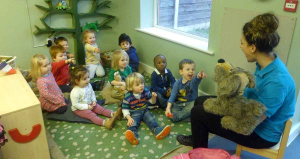
Encourage dramatic play and storytelling by setting up a puppet theater. Provide a variety of puppets, including characters from different nursery rhymes. Invite the preschoolers to take turns performing short puppet shows based on their favorite rhymes. This activity nurtures creativity, oral expression, and imaginative thinking as the children bring the rhymes to life through their puppetry.
Rhyme Reflection Art:
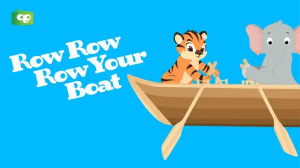
Combine introspection and creativity with this art-based activity. Choose a reflective nursery rhyme, such as “Row, Row, Row Your Boat.” After reading or reciting the rhyme, provide mirrors, watercolor paints, and brushes. Encourage the preschoolers to paint their interpretations of the rhyme while looking at their reflections. This unique approach not only reinforces the rhyme’s content but also promotes self-awareness and artistic exploration.
Related: 20 Vibrant beach theme bulletin board
Rhyme Alphabet Hunt:
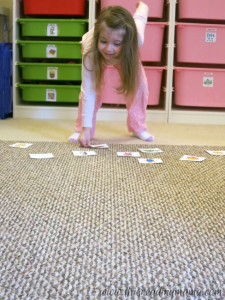
Transform learning the alphabet into a delightful adventure using nursery rhymes. Select a few rhymes and identify words within them that start with different letters of the alphabet. Create an alphabet chart or flashcards with these words. Then, invite the preschoolers to match each word with the corresponding letter. This activity not only reinforces letter recognition but also introduces them to initial sounds and vocabulary related to rhymes.
Rhyme Sensory Play:

Engage young senses with a sensory play activity inspired by nursery rhymes. Choose a rhyme that features a specific setting, like “Itsy Bitsy Spider.” Set up sensory bins with materials representing the elements of the rhyme, such as water, toy spiders, and raindrop-shaped beads. The preschoolers can explore these bins, manipulating the materials and reenacting the rhyme while experiencing various textures and sensations.
Rhyme Texture Collages:
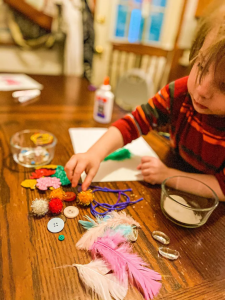
Immerse children in a tactile experience with texture collages inspired by nursery rhymes. Choose rhymes that mention different textures, like “Three Blind Mice.” Gather a variety of textured materials such as fabric swatches, sandpaper, feathers, and bubble wrap. After reciting the rhyme, invite the preschoolers to create collages using these materials, enhancing sensory awareness and artistic expression.
Rhyme Word Puzzles:

Boost language skills and problem-solving abilities with rhyme-themed word puzzles. Choose a few nursery rhymes and write down keywords or phrases on separate puzzle pieces. Cut each puzzle piece into sections corresponding to the letters in the words. Mix up the pieces and challenge the preschoolers to reassemble the words correctly. This activity enhances letter recognition, spelling, and cognitive agility in a playful manner.
Rhyme Cooperative Art:
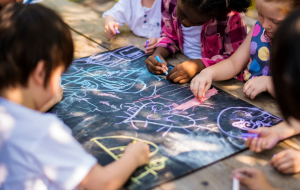
Promote teamwork and collaboration through cooperative art projects based on nursery rhymes. Choose rhymes with scenes or characters that can be divided into different sections, like “Mary, Mary, Quite Contrary.” Divide a large piece of paper into sections and assign each group of preschoolers a section to illustrate using various art materials. Once completed, assemble the sections to create a collaborative artwork inspired by the rhyme.
Rhyme Yoga and Movement:

Promote physical activity and relaxation with a rhyme-themed yoga and movement session. Choose rhymes that depict animals, actions, or nature, like “Five Little Ducks.” As you recite the rhyme, guide the preschoolers through yoga poses or movements that reflect the rhyme’s content. For instance, they can flap their “duck wings” or stretch like a “twinkling star.” This activity enhances flexibility, coordination, and mindfulness.
Rhyme Building Blocks:
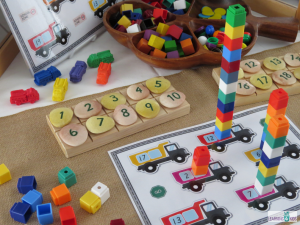
Combine literacy and construction skills in this engaging activity. Print out images representing different nursery rhymes and laminate them. Provide building blocks or stacking toys. Encourage the preschoolers to match the images with the corresponding rhymes and then build structures inspired by the rhymes’ settings. This activity promotes visual recognition, fine motor skills, and imaginative play.
Rhyme Outdoor Adventure:

Take the nursery rhyme fun outdoors with a nature-inspired exploration. Choose rhymes centered around outdoor elements, like “The Wheels on the Bus.” Lead the preschoolers on a nature walk, and as you encounter different elements mentioned in the rhyme (e.g., trees, birds), engage the children in related activities like bird-watching or tree rubbing. This activity fosters a connection to nature, observation skills, and an appreciation for the environment.
Rhyme Story Mapping:

Enhance spatial reasoning and storytelling skills by creating story maps based on nursery rhymes. Choose a rhyme and create a simple visual representation of its key elements on a large piece of paper. Then, provide small manipulatives or stickers representing characters, objects, and scenes from the rhyme. Encourage the preschoolers to place the manipulatives on the story map as they retell the rhyme in their own words.
Rhyme Science Experiments:

Engage curious minds with rhyme-themed science experiments. Select rhymes that involve natural phenomena, like “Hey Diddle Diddle.” Read the rhyme and then conduct a related experiment, such as creating a model of the moon using playdough or observing the effects of mixing oil and water. This hands-on approach integrates scientific exploration with imaginative play.
Rhyme Language Hunt:

Transform language development into a playful scavenger hunt. Choose a nursery rhyme and identify specific words or phrases within it. Write these words on sticky notes and place them around the room. Provide the preschoolers with magnifying glasses and challenge them to find the hidden words. As they discover each word, encourage them to say it aloud and discuss its meaning within the context of the rhyme.
Rhyme Math Challenge:

Infuse math skills into rhyme-themed activities with simple math challenges. Select rhymes that involve counting or basic arithmetic concepts, like “One, Two, Buckle My Shoe.” After reciting the rhyme, present math problems related to the rhyme’s content. For instance, ask the preschoolers to count the number of shoes in the rhyme or add up the total number of animals mentioned. This activity introduces early math concepts in a familiar context.
Rhyme Community Sharing:
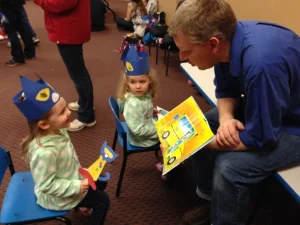
Extend the nursery rhyme experience beyond the classroom by involving families and the broader community. Choose a few rhymes that emphasize themes like friendship, sharing, or community, such as “Mary Had a Little Lamb.” Encourage the preschoolers to create simple art or craft projects related to the rhyme and invite family members or neighbors to join in a rhyme-sharing event. This activity fosters social connections and collaborative learning.
Related: 20 Memorable End of Year Activities for 4th Graders


